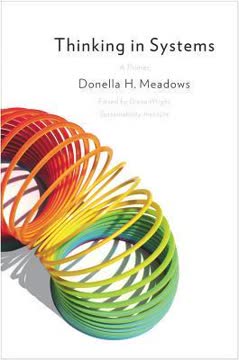Key Takeaways
1. Confidence is not competence, and often the opposite.
The main difference between people who lack confidence and those who don’t is that the former are unable (or unwilling) to distort reality in their favor.
Feeling vs. Being. Confidence is feeling able, while competence is being able. Society often assumes high confidence leads to success, but this is unfounded. Exceptional achievers like Obama, Branson, or Jordan are confident because they are competent, not the other way around.
Weak correlation. The link between confidence and competence is weak (around .30). Studies using objective measures of competence, like attractiveness ratings by others versus self-ratings, show little to no correlation. Confident people are often attractive only in their own eyes.
Delusional overconfidence. Most people suffer from a "better-than-average" bias, believing they are better than average at almost everything, which is statistically impossible. This bias is less pronounced in people with low confidence, suggesting they are more realistic.
2. High confidence is frequently a harmful delusion.
The more confident you are, then, the more likely you are to fool yourself.
Bias blind spot. People tend to see themselves as less biased than others, even after learning about common biases. This self-deception prevents them from recognizing their own flaws and limitations.
Detrimental effects. Studies show that people with inflated self-views are often perceived negatively by others years later, described as deceitful, distrustful, or condescending. Overconfidence doesn't increase social competence; it harms it.
Ignoring reality. High confidence leads people to ignore negative feedback, overestimate their abilities, and perform worse. They distort reality to maintain a positive self-image, hindering learning and improvement.
3. Low confidence is an adaptive tool for realism and protection.
Thus anxiety and low confidence are adaptive in that they help you to err on the side of caution and minimize losses.
Risk management. Low confidence acts as a protective mechanism, increasing vigilance and preparation for potential threats. Anxiety, an extreme form of low confidence, evolved to activate fight-or-flight responses and prevent danger.
Real-world benefits. Anxious people are less likely to have fatal accidents, more likely to enroll in prevention programs (like HIV), and better prepared for natural disasters. Women, generally more anxious than men, tend to live longer due to lower risk-taking and higher prevention behaviors.
Depressive realism. People with depressive tendencies often have more realistic judgments and self-views. While unpleasant, this "sadder but wiser" perspective helps them focus on real problems and avoid unrealistic expectations.
4. Dissatisfaction and low confidence drive competence gains.
Dissatisfaction is the mother of change, and only change can drive improvement.
Motivation to improve. Low confidence signals a need to improve, acting as a powerful motivational force. Wanting to be good at something is incompatible with thinking you are already good at it.
Effort and preparation. Lower confidence leads to increased resource allocation and effort. Studies show that lowering people's confidence motivates them to work harder, while increasing it has the opposite effect.
Perceptual control theory. Motivation arises from the gap between current and desired states. Lower confidence increases this perceived gap, driving higher effort levels. Security leads to complacency; insecurity drives acceleration.
5. Reputation, or how others see you, is more important than self-belief.
Indeed, even when you don’t agree with others’ views of you, they probably are true.
Reputation vs. Character. Character is how you see yourself; reputation is how others see you. Studies show reputation is a more accurate predictor of future behavior and competence (career, relationships) than self-views.
Others' agreement. While your self-view may differ from others' views, others tend to agree on their perception of you, especially within the same group (friends, colleagues). If everyone else sees you one way and you see yourself differently, they are likely right.
Self-fulfilling prophecy. Others' perceptions, particularly those in power, can shape your reality. The "Pygmalion effect" shows that believing someone is competent can make them perform better, regardless of initial ability.
6. Humility and likability are key to success, not arrogance.
People do not value confidence unless it is accompanied by competence—and even when it is, they prefer to see as little confidence surplus as possible.
Modesty pays off. Studies show that people prefer modest individuals, even when they are highly competent. Displaying low modesty (boasting) is perceived negatively and can inspire resentment.
Humble leadership. Research on successful organizations consistently highlights humble leadership as a key factor. Modest leaders stay longer, build stronger companies, ensure better succession, and are less prone to scandals.
Getting along. The ability to get along with others is crucial for career advancement and effective leadership. Trustworthiness, kindness, and empathy are valued over arrogance, which often masks incompetence and alienates colleagues.
7. Hard work and preparation trump innate talent.
Our research suggests that being smart increases the likelihood of being lazy, while realizing that you are not so smart motivates you to work harder to accomplish your goals.
Talent is overrated. Except for rare child prodigies, innate talent has little impact on long-term success compared to effort. Potential means nothing unless developed through hard work.
Effort matters most. High-performing people simply work harder. Praising effort over intelligence in children fosters a belief that performance can be improved, leading to greater persistence and better results.
Employability factors. Career success depends on employability, which is driven by three factors: displaying competence (often through preparation), working hard, and being likable. Employers often prefer a hardworking, less talented candidate over a lazy, talented one.
8. Focus on others, not yourself, for social success.
If you focus too much on your own feelings, you will end up worrying about your confidence instead of focusing on your competence.
Self-obsession hinders. Worrying excessively about your own confidence or feelings prevents you from paying attention to others. In a self-centered world, showing genuine interest in others makes you stand out positively.
Understanding others. Social competence requires reading people – understanding their goals, intentions, and what they want (love, success, knowledge). People want the same things you do.
Overcoming insecurities. Your insecurities are exacerbated by focusing inward. Shifting your attention to others helps you understand their perspective, which is essential for effective social interaction and overcoming self-doubt.
9. Strategic self-presentation is crucial for influencing others.
The illusion, frankly, is as good as the real thing, because what other people think of you is what matters after all.
External confidence. While internal confidence is often inaccurate, external confidence (how you appear to others) matters because people use it to infer competence. Faking confidence can lead to positive feedback, which can build genuine confidence.
Low confidence strategy. Low social confidence can be an effective presentation strategy. It lowers others' expectations ("under-promise, over-deliver"), minimizes the risk of embarrassing overestimation, and increases the chance of pleasant surprises.
Influencing principles. Mastering social influence involves reading others, presenting yourself well, and getting others to want what you want. Principles like criticizing only fools, avoiding complaints, giving honest compliments, and showing genuine interest are key.
10. Success is the only real cure for insecurity.
If you want a proper cure for your insecurities there is only one effective recipe: success.
Ambition from insecurity. Insecurity can drive ambition as people strive to overcome perceived inferiority. High achievers often self-medicate their insecurities with continuous success, working hard even after significant accomplishments.
Willpower trumps confidence. If you truly want something, your confidence level is secondary; willpower is key. Focusing on achieving goals, rather than fixing insecurities directly, leads to higher achievement and earned confidence.
Earned confidence. Confidence gained through actual competence is realistic and breeds future success. Delusional, self-enhanced confidence predicts future failure. Embrace low confidence as motivation to work hard and achieve real success.
11. A more competent world requires less confidence.
The world would be a more competent place if we could lower people’s confidence.
Overconfidence disasters. Many global problems, from political elections favoring confident but incompetent leaders to economic meltdowns caused by reckless risk-taking, stem from overconfidence. Wars are often the result of leaders' positive illusions about winning.
Competence over confidence. Electing leaders based on competence rather than confidence would lead to better governance and fewer failures. The contrast between cautious, competent leaders and arrogant, less competent ones is evident in national economies.
Downward mobility. Having things too easy or being overly pleased with oneself can kill ambition, leading to downward social mobility across generations. Insecurity and the drive to overcome it are powerful engines for progress.
Last updated:
Review Summary
Confidence received mixed reviews. Many readers found the book's focus on competence over confidence refreshing and thought-provoking. However, some felt it was repetitive and overly negative towards self-confidence. Critics noted logical fallacies and problematic treatment of mental health issues. Positive reviewers appreciated the book's challenge to common self-help narratives, while others found it discouraging for those with low self-esteem. Overall, readers were divided on the book's value and effectiveness in addressing confidence and competence.
Similar Books










Download PDF
Download EPUB
.epub digital book format is ideal for reading ebooks on phones, tablets, and e-readers.





